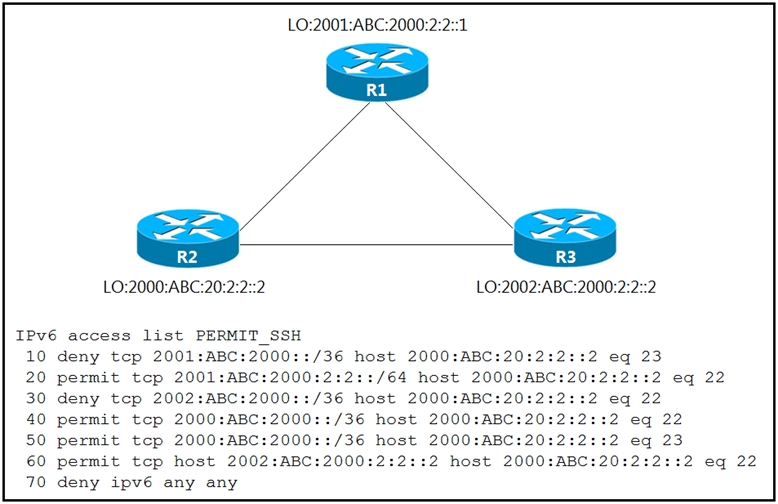
Refer to the exhibit. An IPv6 network was newly deployed in the environment, and the help desk reports that R3 cannot SSH to the R2s Loopback interface.
Which action resolves the issue?

Refer to the exhibit. An IPv6 network was newly deployed in the environment, and the help desk reports that R3 cannot SSH to the R2s Loopback interface.
Which action resolves the issue?
R3 cannot SSH to R2's Loopback interface because line 30 of the access list explicitly denies SSH (port 22) traffic from the subnet 2002:ABC:2000::/36 to the host 2000:ABC:20:2:2::2 (R2). Since SSH traffic is on port 22, modifying line 30 to permit such traffic instead of denying it will resolve the issue. This will allow SSH traffic from the specified subnet to reach R2's Loopback interface.
The given answer is correct
Line 30 of the ACL denies SSH (port 22) traffic from subnet 2002:ABC:2000::/36 to host 2000:ABC:20:2:2::2 (R2). Here is the problem. A. Modify line 10 of the access list to permit instead of deny. Wrong answer. B. Remove line 60 from the access list. Wrong answer. C. Modify line 30 of the access list to permit instead of deny. Correct answer. D. Remove line 70 from the access list. Wrong answer.
I haven't done a ton of IPv6, but... how is the answer correct? It looks to be permitted one way, but return traffic is denied. shouldn't the modification have "permit tcp R2 eq 22 r3"?
Cancel that, I see it. I was mistaken. The given answer is correct
Given answer is correct
Given answer is correct.
network range: 2002:0abc:2000:0000:0000:0000:0000:0000 - 2002:0abc:2fff:ffff:ffff:ffff:ffff:ffff
correct C
C is correct